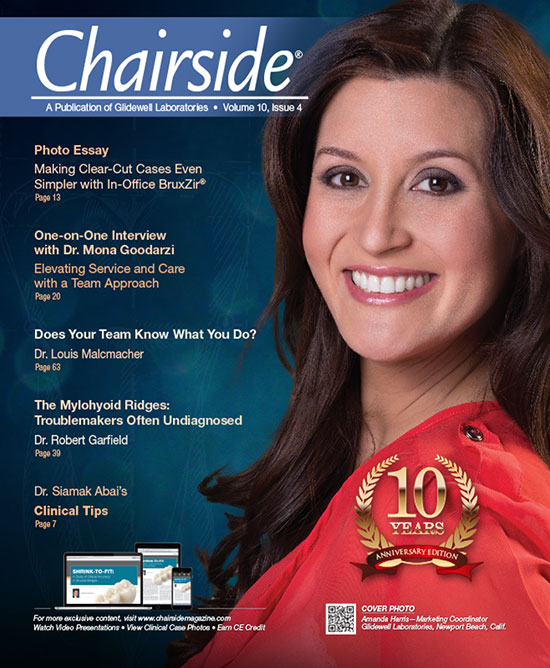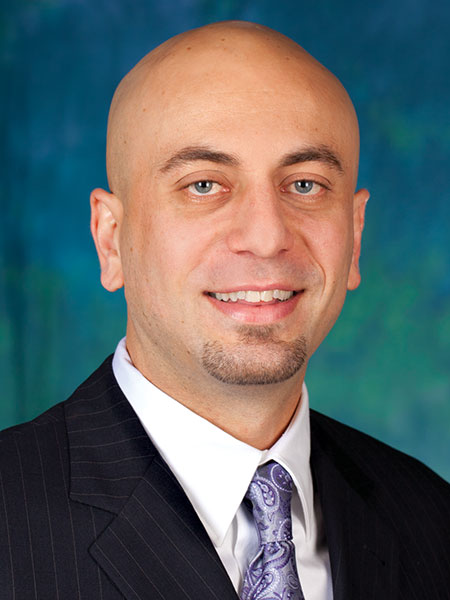One-on-One with Dr. Siamak Abai: Interview with Dr. Mona Goodarzi
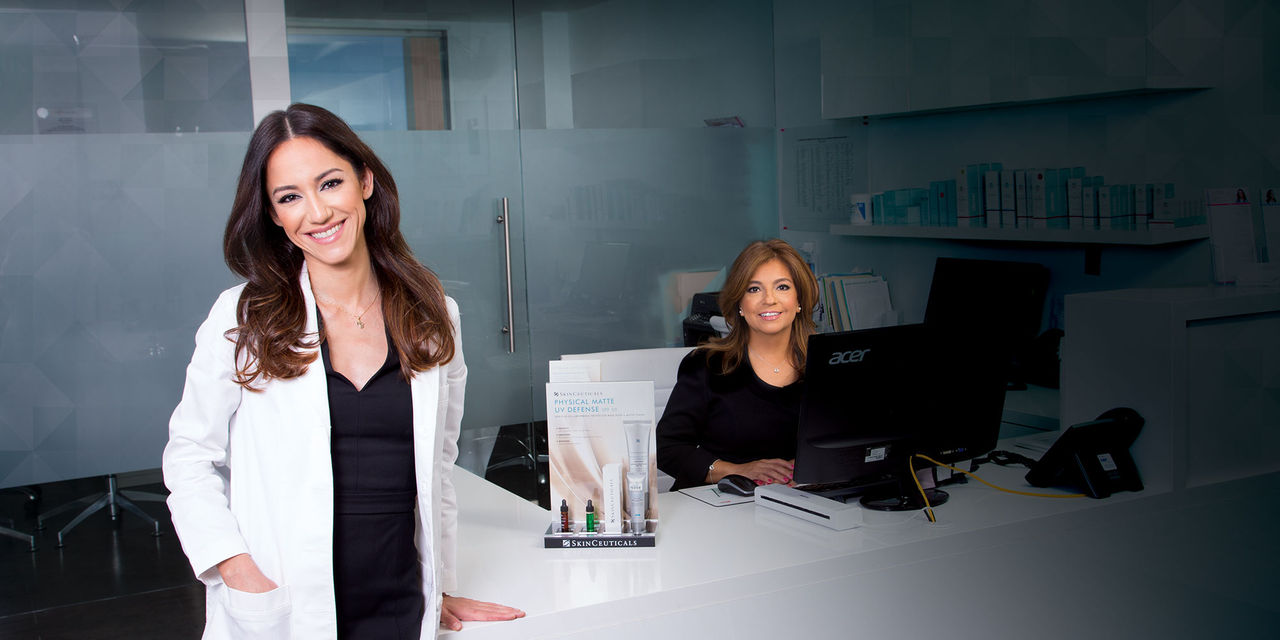
Dr. Mona Goodarzi moved to the United States from Iran at age 14 and attended Woodbridge High School in Irvine, California, followed by a focus on physics at the University of California, Irvine. Her dental education took her to San Francisco, where she attended the University of California, San Francisco. After nearly seven years, she moved back to Orange County and started her own private practice in Irvine in 2013.
Dr. Siamak Abai: Moving to the United States as a young teenager, what were some of the challenges you faced?
Dr. Mona Goodarzi: I was really excited to move to the States. We had family who lived in the States and would visit us, and I always wanted to leave Iran with them on their way back. Because of that excitement, I think I was able to handle the challenges well. But it is a difficult experience, especially for a young teen, when you are just getting to the age where you want to be independent and know everything. All of a sudden I was thrown into a place where I barely knew the language and didn’t know the culture well, even though my family lived a relatively westernized life in Iran compared to the average family. I was a very social kid back home, and the limitations of language and culture kept me a bit quiet at school, which was the hardest thing for me to handle. So as with many other immigrant children, I excelled academically instead.
SA: That’s definitely a tough age for everyone, regardless of language. How did the profession of dentistry find you?
MG: I was a very artsy child, and although I grew up with people in health care, I didn’t have much interest in anything other than the arts. I entered college with an undeclared major and the physics department was the easiest to get into and would eliminate a few of the general education courses I had to take, so I thought it would be a good deal. I declared physics and I’m lucky I ended up enjoying it very much. I thought about continuing, but the arts kept me distracted. So after graduation with a degree in physics, I started to follow my passion and applied for a graduate program in architecture. I was accepted despite my limited portfolio, and at that time I thought my life was set. I started tutoring physics and took a minimum-wage job at a dental office just cleaning instruments to save money for a few months before starting grad school. I found a few new friends, including you, around that same time who were studying for the dental entrance exam and needed help with math, and somehow, with the exposure at the dental office and hanging out with pre-dental students, I became intrigued by the field and decided to give it a shot. I put grad school on hold for a year, studied with my friends for the entrance exam, applied and got in. The rest is history.
SA: I like that you said the physics department was the easiest to get into; it really shows how academically thorough you were. How did you pick your dental school?
MG: My first choice was Harvard University, which I was totally rejected from. Not even an interview. My second choice was University of California, San Francisco (UCSF) or any other Ivy League. Once I narrowed my options, it came down to Columbia University College of Dental Medicine and UCSF, and you recommended that I stay local while you were at Columbia dental school, so I picked UCSF.
SA: You made a great choice in selecting UCSF. I remember talking about it in 2003 when I was a third-year dental student at Columbia University. Getting into UCSF was an elusive endeavor for me so I may have projected my feeling of UCSF, and the city of San Francisco in general, when I was giving you advice back then. When did you graduate, and what did you do right after graduation?
MG: I graduated dental school in 2008 and entered a general practice residency right after, hoping to continue on to an oral surgery residency.
SA: Why didn’t you specialize?
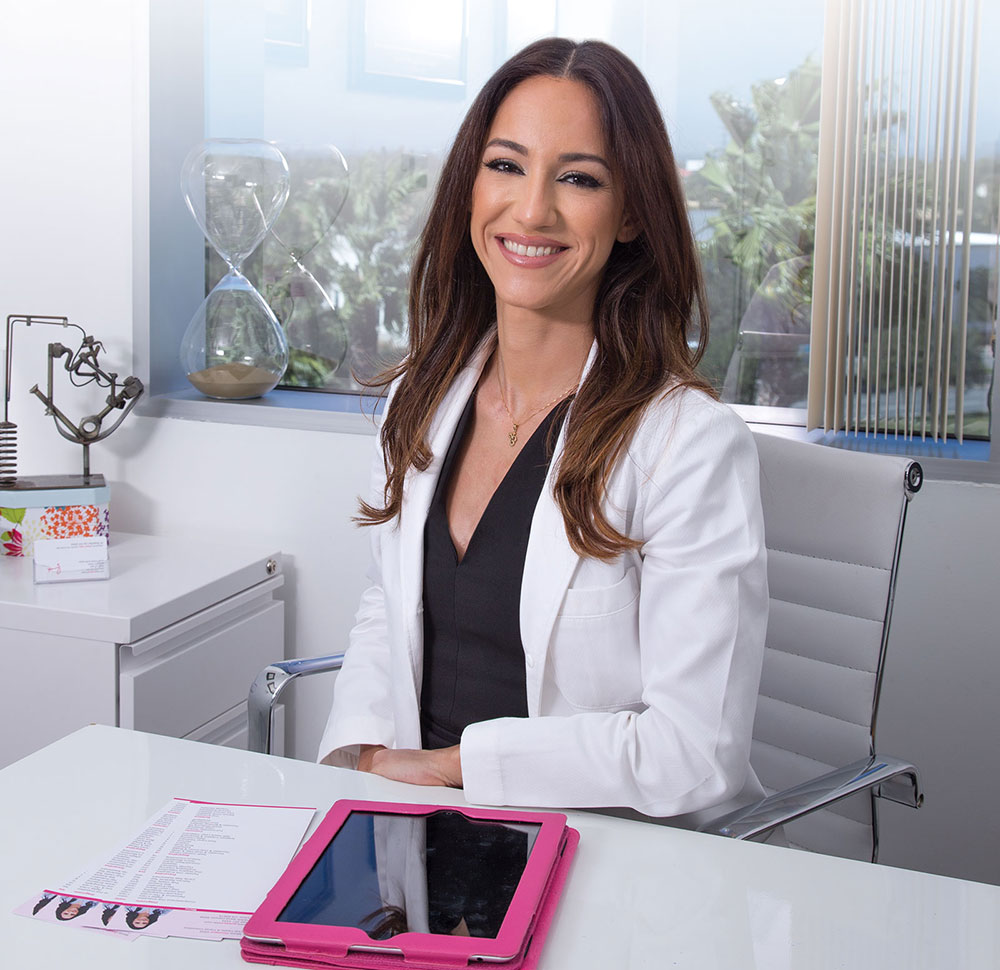
MG: I had an amazing oral surgery faculty to mentor me during my general practice residency at UCSF. They liked my work and knew of the interest I had in oral surgery. They offered to switch me to their oral surgery internship as a stepping-stone. I knew it was a once-in-a-lifetime opportunity for me at that time. I was ecstatic and scared at the same time, but unfortunately the scared part of me won. I think about oral surgery residency on a weekly basis, if not daily, but no firm plans yet. I do enjoy general and cosmetic dentistry a lot, and that may be another reason I feel content and have not really committed to going back to school.
SA: I think the dynamic nature of general dentistry needs to be highlighted more. Some of the most talented dentists that I’ve run into are general dentists who have pursued a passion within the field, be it cosmetic dentistry or implant dentistry. For example, Dr. Dean Saki, who practices in Oceanside, California, placed my implant, and he is one of the most skilled implant dentists I know. How would you rate your education at UCSF?
MG: That’s a difficult question to answer, as I have no comparison. I only did dental school at UCSF. Having said that, I’m more than happy with the level of education I received. I think it’s an amazing institution with an abundance of intellect. I think the most valuable thing I was taught at UCSF was to remain a student for life and be eager to learn more and get better on a daily basis. I did learn how to drill teeth as well, but anyone can do that.
SA: Dentists of all career lengths can get stuck, or too comfortable, with their techniques. It’s wonderful that you learned early on the importance of continued learning. How were the departments set up at UCSF?
MG: UCSF is big on comprehensive care. We collaborated with specialists on many cases. In fact, it was required for a portion of our education to work with a specialist on our cases. And that was not limited to dental school. The collaboration of different health disciplines was encouraged and available among all of the schools: med school, pharmacy, dental, etc. We had the freedom to tailor it to our interest, which was great.
SA: That is very similar to Columbia University. We had a comprehensive and multidisciplinary approach to dentistry and our requirements for graduation were very rigorous. Cases were split into two categories: simple and complex. The focus was more on patient care than on how many units you can finish within the allotted time, although they didn’t skimp on that either with the volume of patients needing care in that part of Manhattan. What were some of the procedures you got to practice and those you did not?
MG: Our requirements were pretty diverse and we got exposure to almost everything. As expected, though, the bread-and-butter fillings, crown and bridge, root canal treatment, dentures and such were more abundant than cosmetic dentistry, implants, and things of that nature on the other end of the spectrum. At that time, subjects such as laser dentistry and 3D imaging were not that mainstream, and so we only touched on it didactically, if I remember correctly. I’m sure it has changed a lot in the past 10 years or so. UCSF is a cutting-edge institute.
SA: Was implant dentistry incorporated into your education at UCSF?
MG: Yes, it was. We were trained on the restorative side while the surgical aspect was per each student’s interest. As a dental student, we would collaborate with oral surgeons for implants. I’m not sure if perio was an option. Perhaps due to my interest in oral surgery, I only got exposed to it through them.
SA: How did you choose your career path in dentistry? Did you look into corporate dentistry, solo practice or associateship?
MG: I worked in a corporate setting for a few months and realized the philosophy of “corporate” life is very different than mine. I will spare the details. Second to that, I tried associateship and learned soon after that the ideal practice environment for me to do the kind of dentistry I dreamt of could only be obtained if I created a practice myself. Not that it’s unique enough to be the only one of its kind, but anyone who wishes to practice the way I do has done the same and is in a solo practice.
SA: Many clinicians will agree with you. Did dental school prepare you for your own private solo practice?
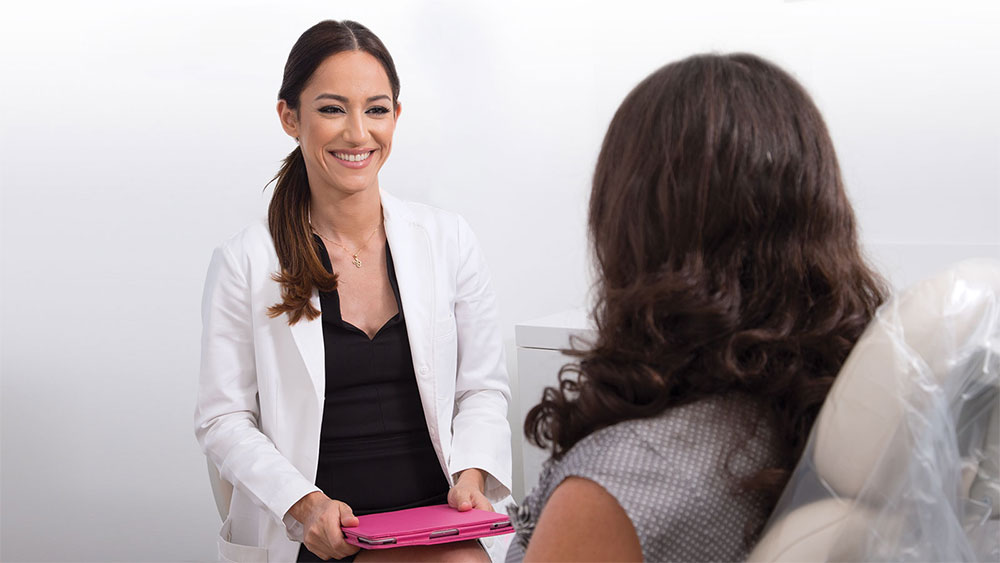
MG: Clinically, I think it prepared me well. But in general, I think at least one year of a postgraduate program, whether it be a general practice residency or advanced education in general dentistry, should be mandatory prior to being allowed to practice independently, similar to med school. No matter how good of a program or how good of a student, there is just not enough time in four years of dental school to see very many patients and gain much experience. I’m happy I did general practice residency. But speaking in terms of the business, it didn’t prepare me at all; you need business school for that. I don’t think it’s really their job. It’s just unfortunate that you need that skill set in private practice!
SA: I agree. The business and practice management side of dentistry can be just as important as the skills we acquire to treat patients. Many dentists are poor managers, and that’s OK. The most successful dentists in private practice have surrounded themselves with excellent teams. Where did you gain the knowledge to set up your practice on your own?’
MG: Most of us learn it as we go. A few smart ones dual-degreed in dental school and came out with their DDS and MBA. For me, it was just trial and error. I thought the business aspect was just common sense. I know better now.
SA: I think the dual DDS and MBA degree is very helpful in today’s climate. As a dental student, you’re always focused on just finishing the DDS part and don’t need the stress of adding another degree. Looking back, that would have been a great option, with one more year of schooling for the MBA degree. How did you do your market analysis to find the location for your practice? What led you to Irvine, being surrounded by many dentists?
MG: I did not do any market analysis. In my mind, the success of the type of practice I wanted to have would be based not on location, but rather on the quality of work I would produce. My office was the first location I was shown by my agent, and I fell in love with the building. It looked professional and was surrounded by established doctors and health care facilities like Hoag Hospital Irvine and Kaiser Permanente medical offices.
SA: Did you make any financial mistakes?
MG: Lots, but it’s all part of the game. For example, I walked into a bank for a business loan, and 20 minutes later I walked out with the loan: no discussion, no trouble. A friend of mine was going through the same, but it took him a few months. Later I realized he was negotiating the interest rate. I had no idea you could negotiate with a bank! I also chose the most expensive supplier to set up my practice. For some things, it was worth it — everything was high quality — but a vast majority of it could have been purchased for less had I done my research. I just wanted to get it set up as soon as possible so I could get to work and do dentistry. I didn’t really care how much it was going to cost me.
SA: If you were to create your own practice from scratch again, what would you do differently?
MG: I would spend time and money a little more wisely. I’d also not put too much trust in the information from others and instead do my own due diligence on everything.
SA: Working with your sister who is a dermatologist, and being one of the few facial and dental esthetic centers, what are some advantages and disadvantages?
MG: I think there are only advantages, at least with our setup. I love working with her as a sister and as a colleague. We each bring unique things to the table that without the other would not be possible. We can offer more comprehensive cosmetic treatment options together. I know I can perform facial esthetic procedures with BOTOX® (Allergan, Inc.; Irvine, Calif.) and dermal fillers, but I’m sure a dermatologist can do it way better than me, and it’s nice to be able to offer the best to your patients. We often collaborate medically on issues such as soft-tissue lesions and their oral and dermal manifestations, drug interactions, systemic disease, and other areas where oral and dermal considerations come into play. The experience as a whole has elevated our resources, and we’re both happy and excited about it.
SA: That’s a good point about BOTOX being administered by a dentist. I feel very comfortable with injections, and the argument is: If I can give an injection in the mouth, why can’t I give one outside the mouth? The question is, how prepared we are to deal with the complications, and it’s very smart to share those patients with your sister, in the same practice, under one roof. Do you and your sister advertise together?
MG: We don’t really advertise externally. We used to, and if we ever do again, yes, absolutely. We take pride in the setting that we have, and our patients seem to like it as well.
SA: You mentioned you used to advertise early on. Why not now? What was the trend with and without advertising, and what challenges were there?
MG: When we first started, we needed to introduce ourselves to the community, and although both my sister and I are opposed to advertising in health care, we had no other choice. Once the community started noticing us, there was no need for external advertisements anymore. We get all of our new patients from word of mouth and internal referrals. I think the new patients you get through word of mouth or referrals are a lot more comfortable on their first visit. They already have a trust in you, and it’s easy to treat a patient when there is full trust. Given our new practice and young age, it was a little more challenging to gain the trust of the patients we used to get from our ads.
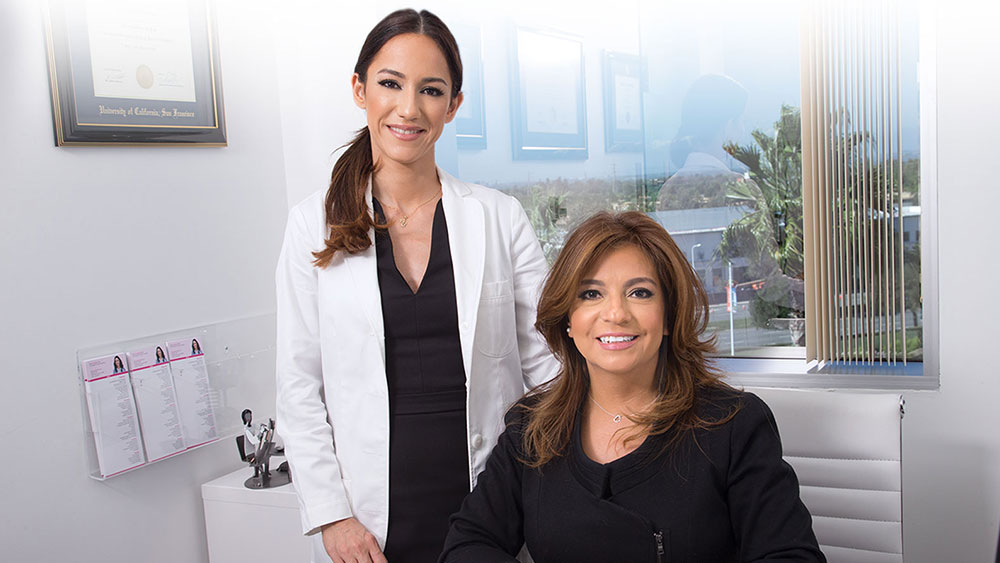
SA: What role has social media played in helping establish your practice? What are some of the challenges?
MG: I use social media as I would in my personal life. So it’s just a glimpse into my daily life at work and as a dentist. Nothing more. As for the reviews, I’m lucky to not have had any bad ones so far, but I know they are inevitable and I think there is a reason for any bad review. As long as it’s addressed, I’ll be OK.
SA: That’s a very smart way to look at it. With the rise of social media, there’s been a litany of courses and seminars training dentists on how to handle it. And while those are certainly good for some clinicians, it’s nice to see that even a younger dentist like you can focus on dentistry instead of getting clouded from all the new aspects. What have been the key practice builders for you?
MG: Quality of work; finding quality team members; providing good, humane customer service; and making sure my patients know I care about every single one of them as a human being, not just as a patient or client.
SA: Those are all great points. The most successful clinicians I know have the same mindset. Building relationships with their patients is the most important aspect of their health care. What’s the community of your patients like?
MG: I would say mostly young professionals; they’re intelligent, they can distinguish quality care, and their health is important to them. They understand the value of preventive care and appreciate the kind of care we provide.
SA: Do you feel like the way your practice is set up is enough? Do you have any aspirations of growing your practice? Is it even worth doing that in this environment?
MG: I love the setup of my practice and am very comfortable with it. Growing is a never-ending aspiration. At this point, however, my main focus is expanding my dental knowledge, utilizing new techniques and materials, incorporating new gadgets, and using newer technology. I’m comfortable with the size of the practice for now.
SA: I know you have a panoramic radiographic unit, but would you want to incorporate CBCT into your practice?
MG: Absolutely. I think CBCT is the standard of care for many procedures now and that’s first on my list.
SA: Do you think a CBCT machine is cost-effective? How can it be more affordable?
MG: I’m not sure if it is cost-effective in the sense that you would make the money by taking CBCTs as the sales reps keep telling you, but I think it gives you the opportunity to treat better and that makes it cost-effective in the long run. It is an expensive machine and that’s been the limiting factor for me. I wish they would come up with a way to make it more affordable. I’m not sure how. I guess in a few years, as the technology advances, theirs will become trivial and less expensive.

SA: How about a CEREC® machine (Sirona Dental Systems, Inc.; Charlotte, N.C.)?
MG: I’m still not sold on the quality of the CEREC restorations. I’ve been to many of their trainings and events, as I think it’s an amazing idea and have wanted to incorporate it into my practice. But it needs to improve in my opinion. The larger milling machines at milling centers can produce good results, but I have yet to be convinced by a tabletop unit. I’m looking forward to seeing the future generations.
SA: We’ve noticed that is a commonly held thought among many dentists. Throughout our lab we use dozens of milling units that would take the space of the standard operatory. Though they’re super accurate, those machines aren’t really feasible yet for dental practices. We expect that more dentists will get involved as the chairside units get more accurate, easier to use and more cost-effective. What are your thoughts on laser dentistry?
MG: I have a soft-tissue diode that I like and use. I have not been exposed to a hard-tissue laser, and so I can’t really comment on it.
SA: Being a clinician who is always on the search for improved techniques and technologies, give me your thoughts on reps and the sales force that’s out there selling products to dentists? How do you trust a product?
MG: My reps are amazing. We have our ups and downs, but I give them as much time as I can to hear them out and try new things. But I never skip my due diligence. With products, five-year studies from reputable sources are a must for me. With equipment, I have to use them on multiple occasions before I can even comment on them. I love trying new things, but I’m very skeptical about using something unfamiliar on a patient. For that reason, I usually stick to the proven products.
SA: Have you thought about focusing your practice on a sub-specialty?
MG: Absolutely, and it’s in the making. Slowly.
SA: How did you set up your referral system?
MG: I only work with the best. With every specialist who I work with, I have probably — openly or secretly — sent a relative or a friend and followed up with the treatment closely before setting up a working relationship. I trust everyone I work with fully in his or her skills professionally and personally. And in general, I always follow up on the referred treatment closely because of my own curiosity.
SA: That’s a great tactic for gathering information. How was the experience of placing your first implant?
MG: As an oral surgeon wannabe, I love surgical procedures. My first implant case was a hybrid full-arch upper denture on a senior relative. I was nervous but very excited. My hands were shaking. I freehanded four implants in the maxilla and still feel the joy of that final X-ray as if it was minutes ago. One of the best memories I’ve had doing a procedure.
SA: Thank you so much for sitting down and sharing your experiences with me, Mona, and I look forward to hearing more about the success of your practice.

